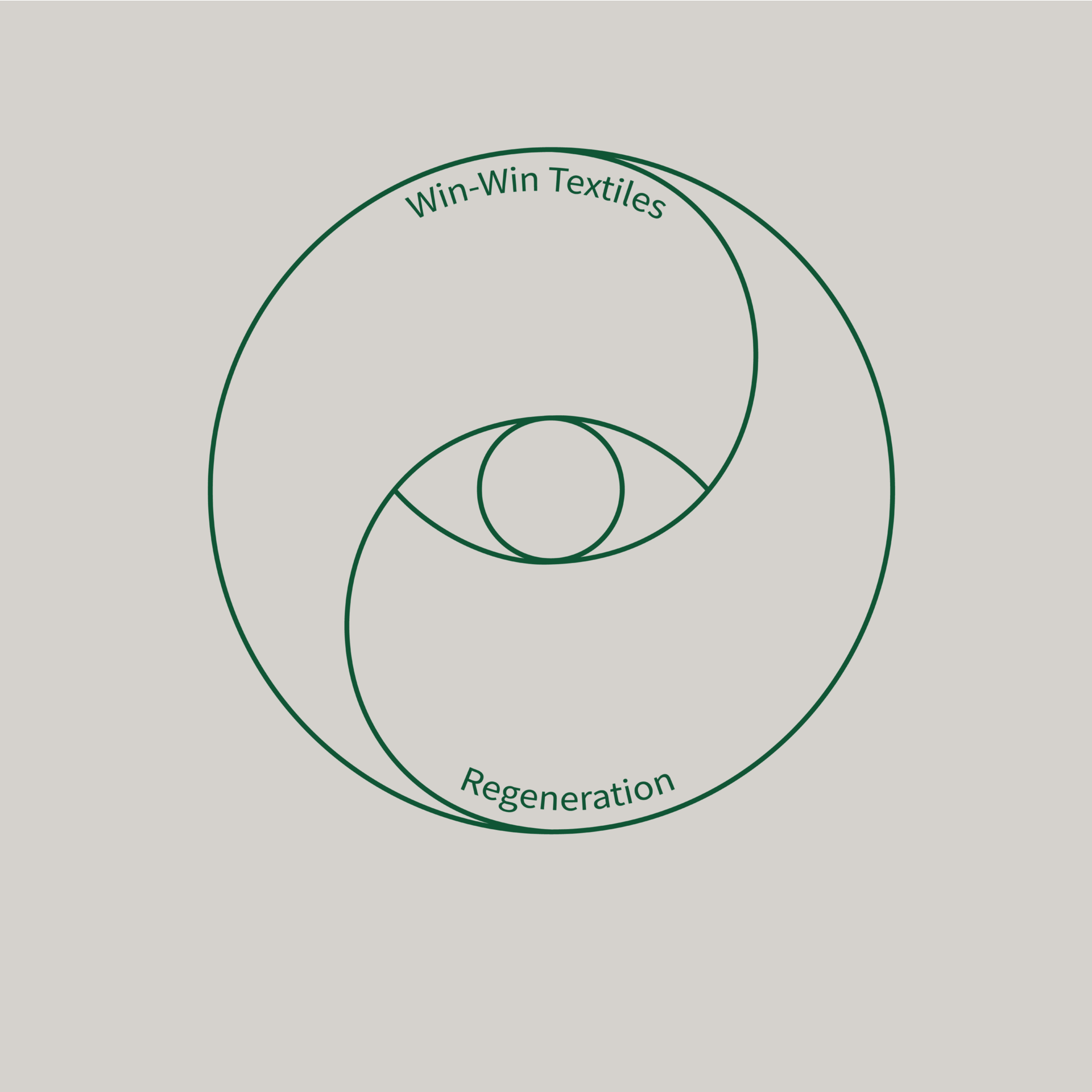The REGENERATION LOGO of Win-Win Textiles and what it means
Win-Win Textiles Regeneration: Inspired by the Seven Chakras of Yoga Philosophy
Despite global efforts, progress towards achieving the 17 Sustainable Development Goals (SDGs) outlined in the 2030 Agenda of the Paris Agreement (2015) remains inadequate. The pace of change is too slow to deliver meaningful results within a reasonable timeframe. For more information, you can download and read the SDG Report 2024.
Recognising this challenge, the IDG Foundation has introduced a transformative framework known as the Inner Development Goals (IDGs) Inner Development Goals, designed to complement the SDGs. While the SDGs represent “outer” development goals, the IDGs highlight the inner growth required to address humanity’s crises effectively. This perspective acknowledges that the global crisis is fundamentally a human crisis, necessitating change from within..
At Win-Win Textiles, we were inspired by the IDG concept but felt it was essential to anchor our approach in yoga philosophy and practice—a natural extension of our culture. From this, we developed our own regenerative logo, symbolising seven layers of consciousness aligned with the seven major chakras. These chakras, or psychic energy centres, correspond to specific nerve clusters and organs, running from the base of the spine to the crown of the head.
Each layer of consciousness progresses naturally to the next, representing an ongoing journey of personal and collective development. Importantly, all seven layers evolve simultaneously, reflecting the interconnected nature of growth.
Below, you’ll find the inner values associated with each energy centre, alongside further details on how we integrate yoga philosophy into our work.
While these values may seem fundamental, they are often lacking in the modern business environment. At Win-Win Textiles, we actively embody these principles, holding monthly Living Systems Gatherings to reflect on and advance our practices. We also share these insights with our stakeholders to encourage broader adoption.
This approach is complemented by our work with the Regenerative DNA Diagnosis Wheel, developped by Laura Storm and Giles Hutchins. For further exploration, please see in our journal for recommended literature.
The elements of our Regeneration logo: I Am/Mūlādhāra/Root Chakra - I Feel/Svādhishthāna/Sacral Chakra - I Do/Manipūra/Solar Plexus Chakra
I Love/Anahāta/Heart Chakra - I Speak/Viśhuddha/Throat Chakra - I See/Ājñā/Third Eye Chakra - I Understand/Sahasrāra/Crown Chakra
A Valuable Diagnostic Tool for Business Culture and Healthy Development
We have found this diagnostic tool to be highly effective in providing a comprehensive overview of the complexities within design, culture, and life dynamics. When combined with our Regeneration Logo and the B-Impact Assessment Tool, the DNA Wheel offers a powerful framework for analysing business culture.
This integrated approach unlocks opportunities for meaningful improvement by fostering a deeper level of awareness and an advanced level of consciousness.




